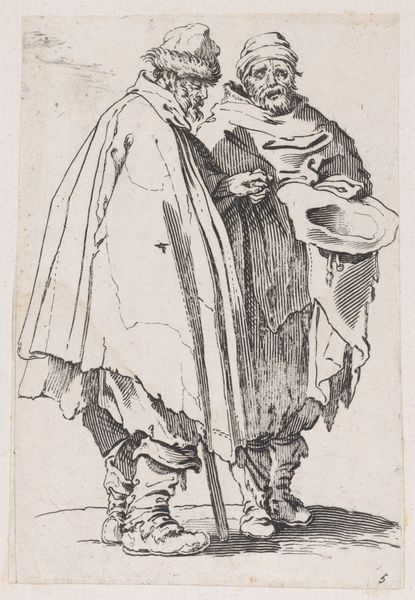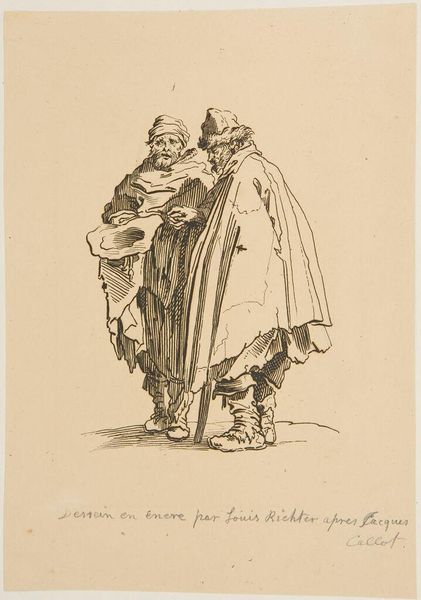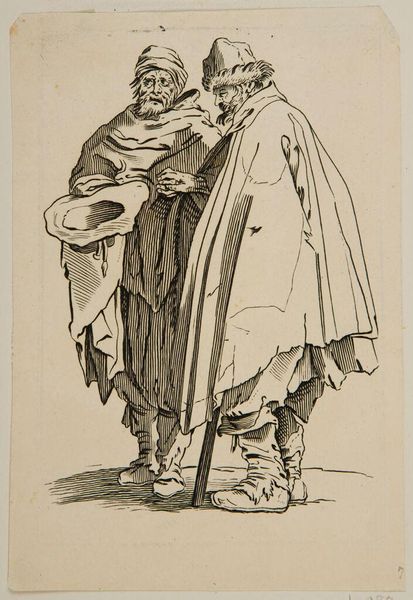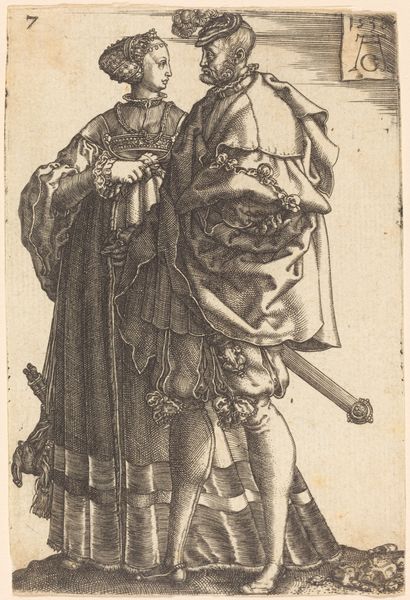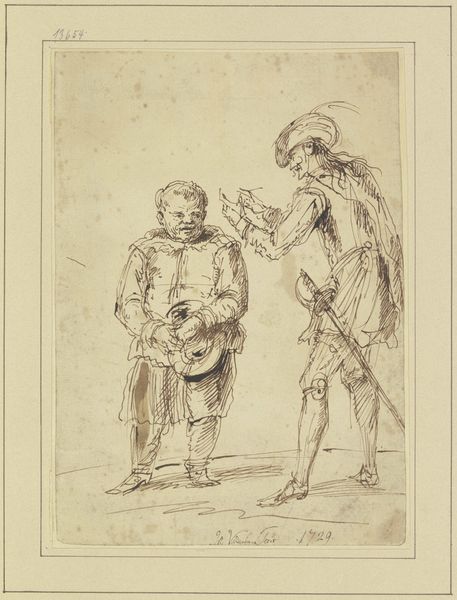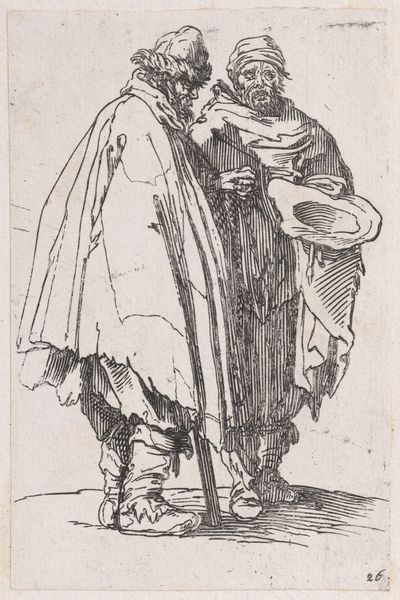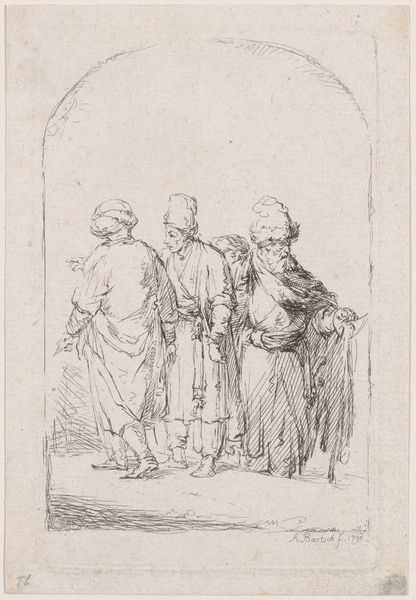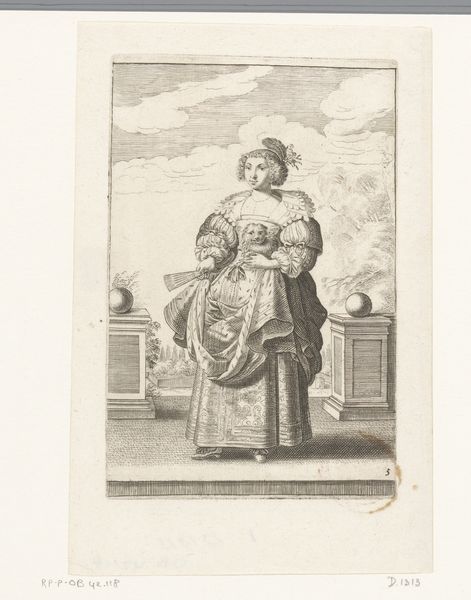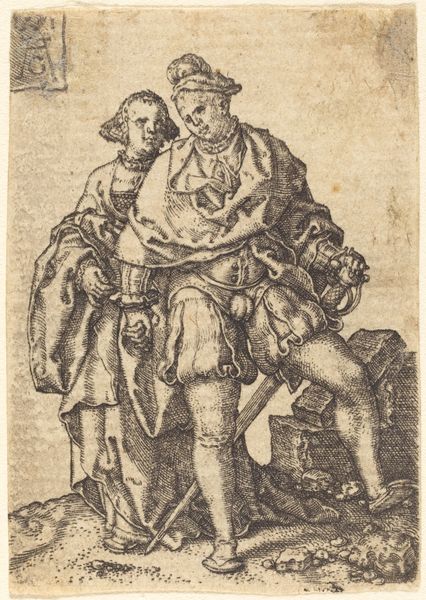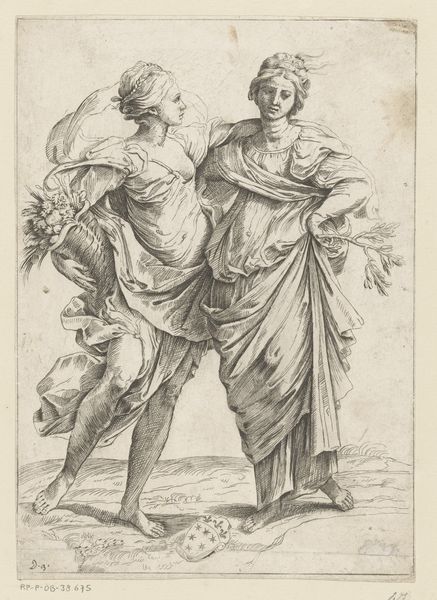
Copy of L'Aveugle et son Compagnon (The Blind Man and his Companion), from "Les Gueux suite appelée aussi Les Mendiants, Les Baroni, ou Les Barons" (The Beggars, also called the Barons) 1625 - 1700
0:00
0:00
drawing, print, engraving
#
portrait
#
drawing
#
baroque
# print
#
figuration
#
genre-painting
#
engraving
Dimensions: Sheet: 6 9/16 x 4 1/8 in. (16.6 x 10.5 cm) Plate: 5 1/2 x 3 3/8 in. (14 x 8.6 cm)
Copyright: Public Domain
Editor: This is a copy of "The Blind Man and his Companion" from "The Beggars", an engraving made sometime between 1625 and 1700 by an anonymous artist. There's a stark realism here. What societal narratives were in play that led to such depictions? Curator: This print belongs to a broader tradition of representing marginal figures, circulating not just as aesthetic objects, but also as social commentary. Consider the "Beggars" series in its entirety; it gives a visual form to the lived experiences of those on the fringes of society, often overlooked by those in power. It’s part of a dialogue about poverty, disability, and societal responsibility. Editor: So, you are saying this image, through its dissemination, served a political function? Curator: Precisely. Prints were easily reproduced and distributed, acting as visual pamphlets. These images of beggars could both elicit sympathy and reinforce social hierarchies, depending on who was viewing them. The question then becomes: how did the intended audience interpret these representations of poverty? Did it inspire charity or fear? Editor: It’s unsettling to think that an image of suffering could serve such varied purposes. So its effect is dependent on its audience? Curator: Absolutely. The power of art often resides not just in its creation, but also in its reception. By examining the historical context and intended audience, we begin to understand the multifaceted role that even a simple print could play in shaping social and political discourse. What are your thoughts now that you've learned more? Editor: It definitely complicates my initial reading. I now see it less as a simple depiction and more as an active participant in a complex social narrative. Thanks for clarifying its deeper context!
Comments
No comments
Be the first to comment and join the conversation on the ultimate creative platform.
